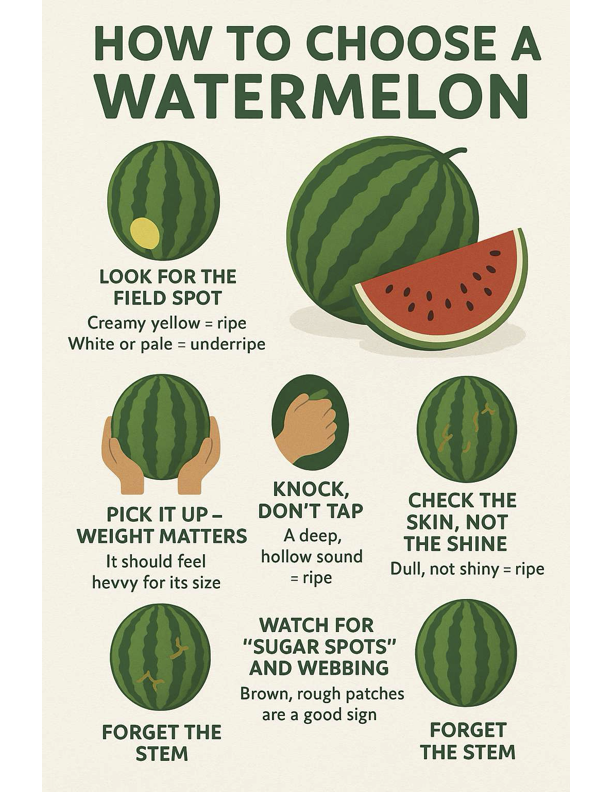Nothing ruins a summer BBQ faster than slicing open a watermelon and finding pale, flavorless mush inside. Luckily, picking the right one isn’t about luck—it’s about knowing what to look for. Here’s your foolproof guide to choosing a sweet, juicy watermelon every time.
1. Look for the Field Spot (and Make Sure It’s Yellow)
That patch on the side where the melon rested on the ground? That’s the field spot.
-
Creamy yellow = ripe and sweet.
-
White or pale green = picked too early. Pass on it.
2. Pick It Up — Weight Matters
A ripe watermelon should feel heavier than it looks. The extra heft means more water content, which means more juice and sweetness. If two melons are the same size, always go for the heavier one.
3. Knock, Don’t Tap
Give it a firm knock with your knuckles.
-
Deep, hollow sound = ripe.
-
Dull, flat sound = overripe or underripe.
4. Check the Skin, Not the Shine
The skin should be dull, not shiny. A shiny watermelon usually means it’s underripe. Also, avoid melons with soft spots, cuts, or bruises.
5. Watch for “Sugar Spots” and Webbing
Brown, rough patches (webbing) are actually a good sign—they show where sugar has leaked and crystallized. A few are fine. Too many might mean it’s overripe.
6. Forget the Stem
A dry, brown stem doesn’t necessarily mean it’s ripe. Many watermelons are stemless by the time they hit the store, so focus on the other cues.
Quick Checklist
✅ Creamy yellow field spot
✅ Feels heavier than it looks
✅ Deep, hollow knock
✅ Dull skin
✅ A few sugar spots
Pro tip: If you find one you like, grab a second—it’ll probably be gone next time you shop.

